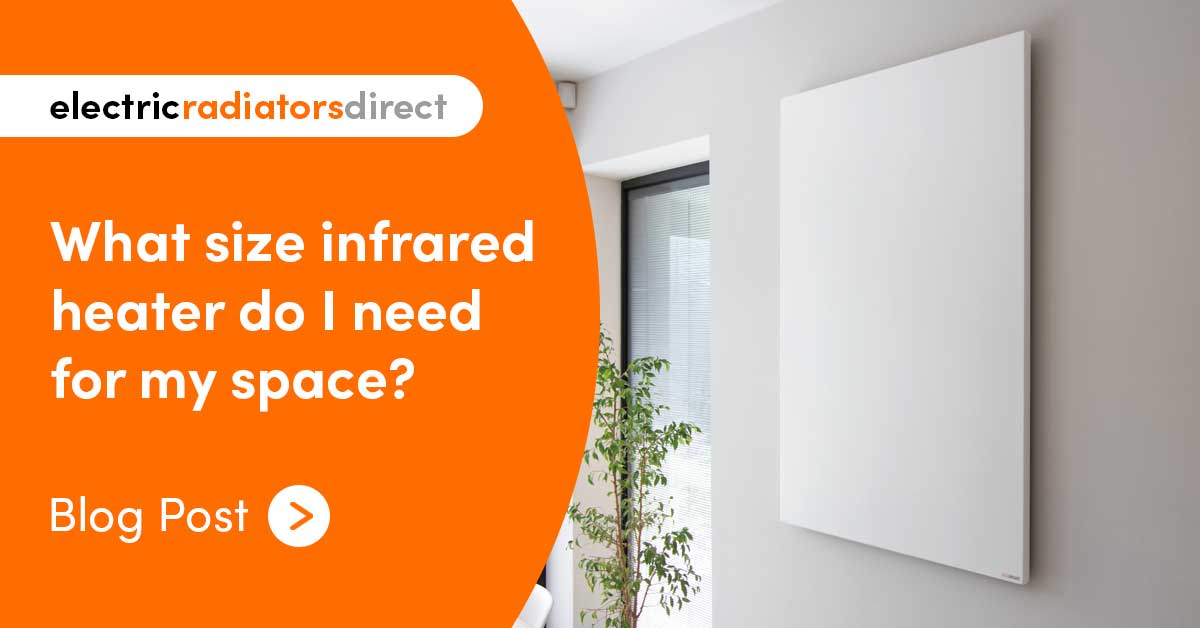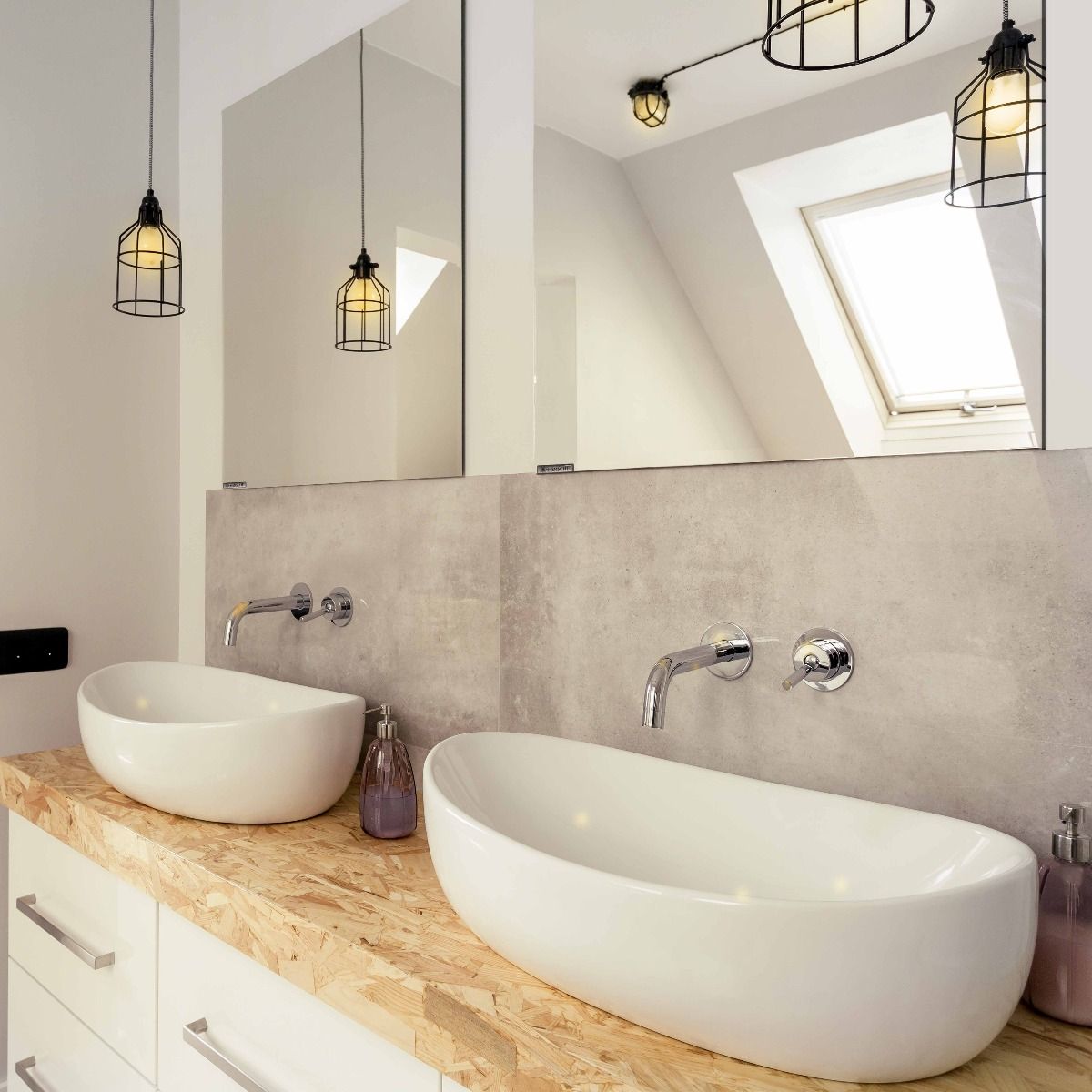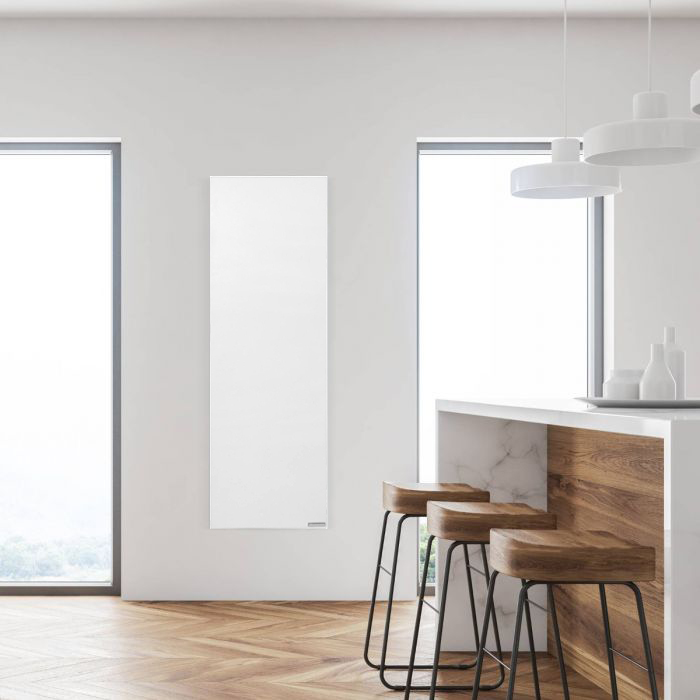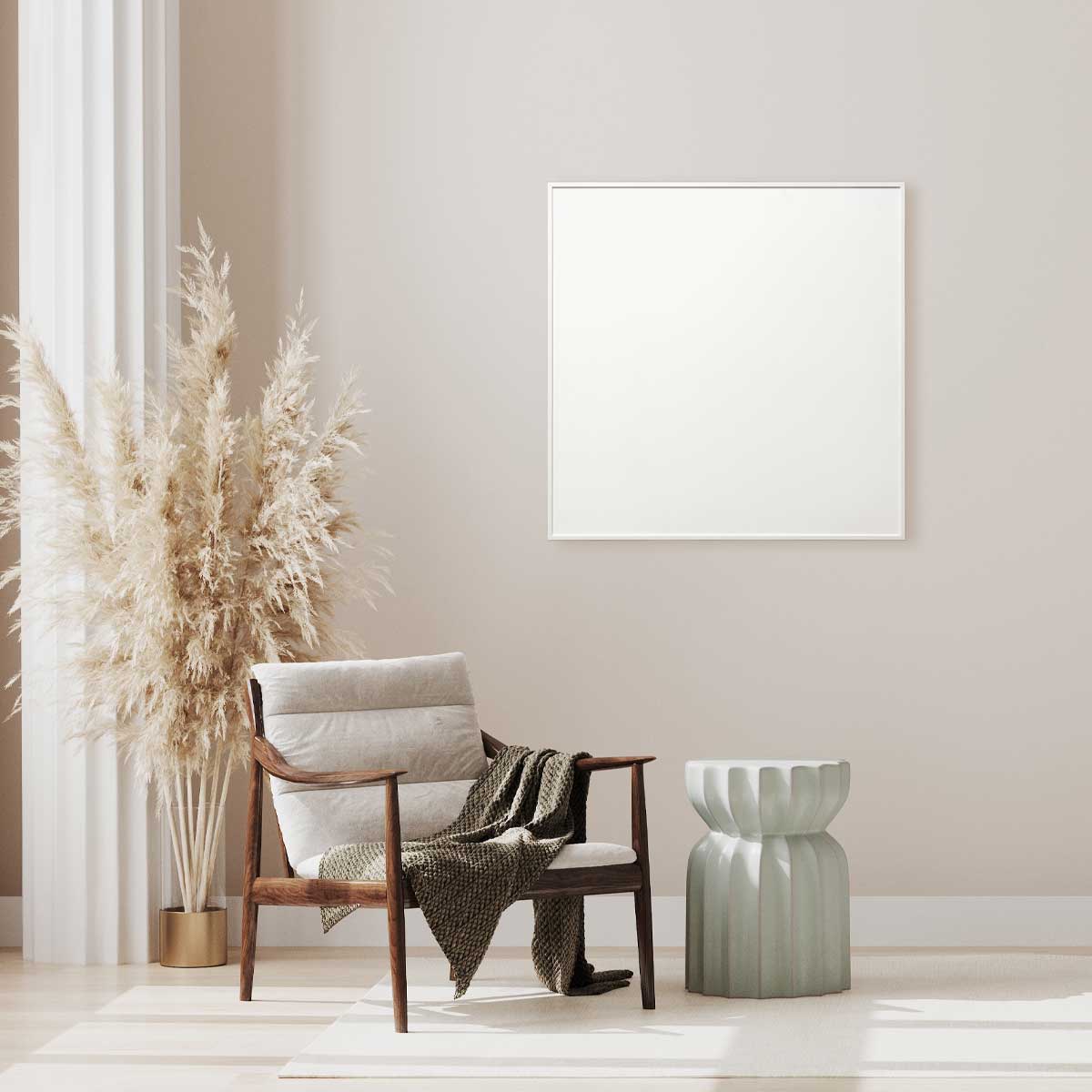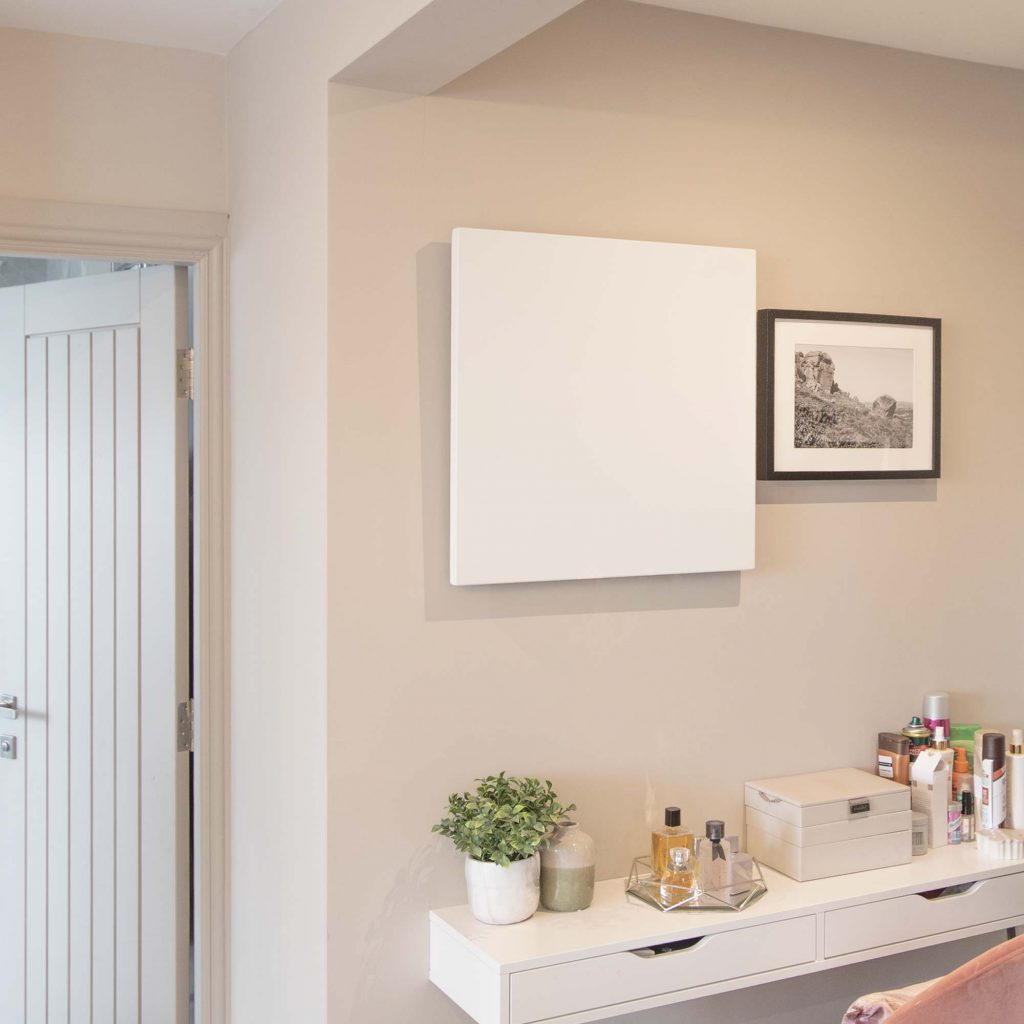Looking to keep your space warm and energy bills in check? Picking the right-sized infrared heater is key. Unlike traditional convection heaters, radiant heaters target surfaces rather than air volume, typically demanding 30% less wattage. This slight difference in calculation might leave you unsure, but fear not – you're in the right place. Let's delve into the details, unravel the essentials, and offer some recommendations to get you started.
Before working out the right size, be sure to check out our buying guide. From installation, to control, to how exactly infrared heating works - we’ve got you covered.
What level of insulation do you have?
The age of your property is usually the best way to determine the level of insulation it has and how good it is at retaining heat. The better the insulation and energy efficiency of your home, the lower the wattage your infrared heater needs.
Of course, your 100-year-old Victorian property could have undergone extensive modifications, upping its efficiency. However, let’s look at the four typical types of homes and level of insulation you can expect with each as a jumping off point. This’ll help figure out how many watts per cubic metre you will need.
Top Tip:
Checking your home’s Energy Performance Certificate (EPC) rating is a valuable tool for determining the required watts per m3.
| House type | Level of insulation | Watts needed per m3 |
| Period home – built before 1930 | Poor – solid wall insulation & single glazed windows | 30W per m3 |
| Old home – built between 1930-1980 | Moderate – cavity wall insulation & double glazing | 25W per m3 |
| Modern home – built after 1980, or has been reinsulated | Good – cavity walls, loft insulation & double glazing | 20W per m3 |
| New build – built within the last 2 years | Excellent – uplift in building fabric standards | 15W per m3 |
What size room are you trying to heat?
The next step lies with the size dimensions of the room. Multiply the height, width, and length to find the volume, and then multiply that by cubic metre. Let's break it down with a few examples to make it easier!
The bathroom in a period home
2.5 metres wide, 3 metres long and 4 metres tall
- 2.5 x 3 x 4 = 30m3
- 30m3 x 30W = 900W
Despite the bathroom being compact with just one small window, this period property is prone to cold spots and dampness. In this instance, the 900w Herschel Inspire Mirror panel will do just nicely! Not only will it keep the room comfortable, but it also doubles as a stylish yet functional wall feature that doesn’t take away from the traditional aesthetics of the space. Plus, its radiant warmth is effective in warding off moisture from settling, ensuring a fog-free surface even after a shower.
The kitchen in an old home
4.5 metres wide, 5 metres long and 5 metres tall
- 4.5 x 5 x 5 = 112.5m3
- 5m3 x 25W = 2812.5W
This generously sized kitchen calls for a robust wattage to keep things warm and cosy. With a requirement of nearly 3000w, it's evident that multiple heaters are the way to go. Given that infrared heat is directional, strategically placing them in different parts of the room ensures consistent comfort, whether you're prepping at the counter or savouring your evening meal at the table. Our recommendation for this scenario is two 1100w Hershel Select XLS White panels and one 800w. This versatile range supports both wall and ceiling mounting, allowing you to target key areas effortlessly without compromising space.
The living room in a modern home
5 metres wide, 5 metres long and 3 metres tall
- 5 x 5 x 3 = 75m3
- 75m3 x 20W = 1500W
In your spacious living room, optimal warmth calls for multiple heaters. The 1100w and 580w Ecostrad Accent iQ is your best choice for cosy, convenient warmth. Equipped with a wireless room temperature sensor accurate to ±0.5ºC, each panel ensures consistent and reliable heating around the clock. As the Accent iQ is compatible with WiFi and voice control, manage both panels directly from your smart device, and with 24/7 programming, relish the luxury of stepping into a toasty living space the moment you return from work!
The bedroom in a new build
3 metres wide, 3 metres long and 3 metres tall
- 3 x 3 x 3 = 27m3
- 27m3 x 15W = 405W
Considering the snug size and excellent heat retention of your space, a low-wattage infrared heater is all you need. To align with your modern interiors, you can’t go wrong with the Ecostrad Opus IR. This sleek solution not only provides effective warmth but also boasts a minimalist finish, complemented by its convenient point & click remote. Its handy adaptive start feature cleverly determines when to start heating, aligning perfectly with your schedule. That way, you’re waking up to a cosy space ready to kickstart the day! Since 405w falls between two sizes, the smart choice would be to go for the slightly higher option at 450w.
Choosing the right size infrared heater: our top tips
While some of these may seem like common sense, the following points are worth emphasising to ensure you make the most informed choice possible!
1. It’s always best to over-specify the wattage
If your calculations land you between two wattages, it’s always best to go higher. While a lower wattage may seem budget-friendly upfront, it can result in the heater working overtime, leading to extended run times and potential temperature imbalances. So, whatever you saved initially will come back to haunt you in your energy bills! Over-specifying ensures your heaters operate more efficiently as well as enhancing their lifespan.


2. Consider the layout of the room
Take into account the unique characteristics of your space for a more accurate wattage. Unconventional room layouts, such as L-shaped spaces, walls with deep alcoves, or an abundance of windows, can complicate your calculations. So, to play it safe, over-specifying is key.
3. Reach out to our team if you’re unsure
One of the best ways to avoid confusion when working out wattage is to contact us directly. Simply drop us an email or give us a call and our expert team can offer you a no obligation free quote. They’ll not only be able to tell you the appropriate size needed, but help you find the perfect heater to match your budget, programming and aesthetic preferences!
Find the perfect infrared heater for your space
So, now you have everything in your arsenal to choose the right size. It’s time to get started on finding the perfect infrared heater for your space by checking out our full range. Remember, our team is on hand to help you every step of the way!
Key learnings
✓ Choosing the correct wattage for your infrared heater matters – selecting the wrong size could lead to uneven temperatures and increased energy bills.
✓ Start by assessing your home's insulation quality to estimate your heating needs per cubic metre.
✓ Calculate the room's volume by multiplying its height, width, and length. Multiply this by the recommended watts per cubic metre to determine the ideal infrared heater size for your space.
✓ Be sure to consider the unique characteristics of a room – an awkward layout or lots of windows might require a higher wattage.
✓ When in doubt between two wattages, opt for the higher one. Over-specifying prevents the heater from working overtime and ensures optimal efficiency.






